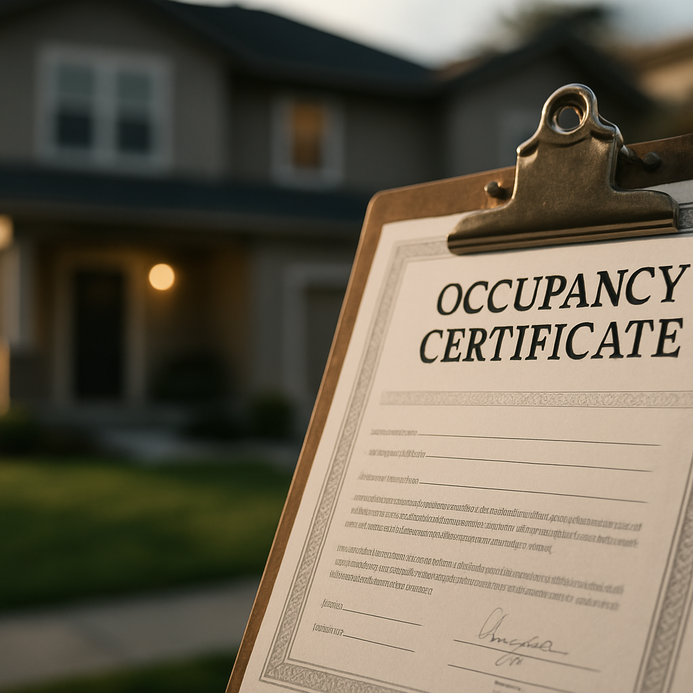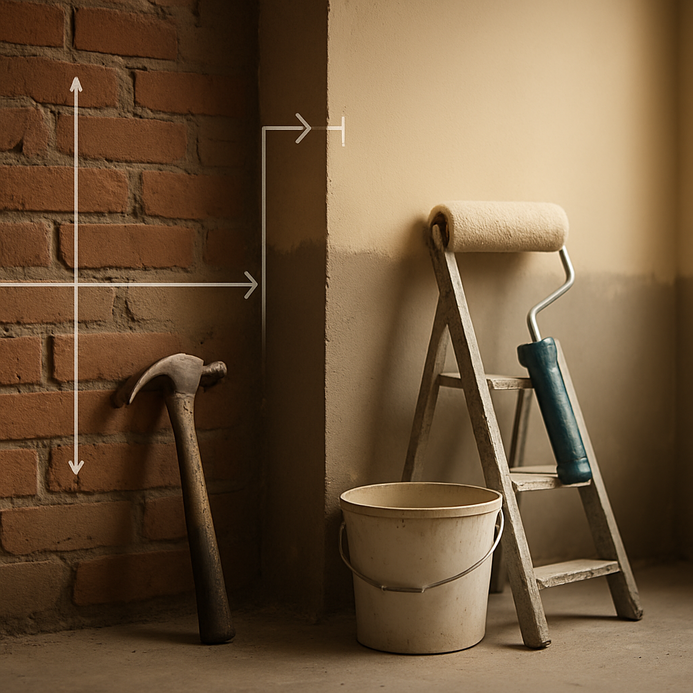How Banks Really Decide Your Home’s Market Value?
- 1 Introduction: The Importance of Property Valuation
- 2 The Valuation Process: A Peek Behind the Curtain
- 3 Key Valuation Methods Used by Banks
- 4 Sales Comparison Approach
- 5 Cost Approach
- 6 Income Approach: How Rental Income Affects Property Valuation
- 7 Factors Influencing Property Valuation
- 8 Understanding Market Value Adjustments and Discrepancies
- 9 Conclusion: Navigating Your Home Buying Journey
- 10 FAQ
Introduction: The Importance of Property Valuation
Property valuation is a big deal for anyone stepping into the real estate market, whether you’re a homeowner or an investor. You need to get a handle on it. The market value can be a game changer, as it affects how banks determine your loan eligibility. Factors like location, property condition, and recent sales data all play a part in this adjustment.
But there’s more to it than just square footage. Take the local trends into account. For instance, flourishing areas in Hyderabad can see wild price swings due to new infrastructure or demographic changes.
Being clued in on how these market value adjustments work can seriously level up your property dealings. It’s about enhancing your negotiation skills while keeping an eye on market trends. This can help you snag a good return on your investment.
To truly grasp property valuation, you’ve gotta get into comparative analysis. Using resources that shed light on the current market values, especially for commercial and residential properties allows buyers to hit those fair price marks.
Want to dig deeper into how market value adjustments influence investment strategies? Check out this link: source.
Thinking of dipping your toes into real estate? Seriously, make it a point to educate yourself on property valuation. Oh, and keeping tabs on how the gold price impacts the overall economy could throw in some helpful context for understanding real estate pricing.
Getting a grip on these factors is key. Prepare yourself for the marketplace ahead. For more insights on property valuation and market dynamics, don’t miss our article on market value adjustments.
| Factor | Importance Level (1-10) |
| Location | 10 |
| Condition | 9 |
| Recent Sales Data | 8 |
| Economic Indicators | 7 |
| Market Trends | 6 |
This table shows what really drives property market values, helping you craft a solid investment strategy.
The Valuation Process: A Peek Behind the Curtain
Ever applied for a home loan? If so, knowing how banks come up with a property’s valuation is super important. They bring in pros to crunch the numbers on market value adjustments (MVA), it’s a big part of loan approval. The process isn’t just a one-step wonder; it’s got a few moving parts, like comparative market analysis and income assessments.
Market Value Adjustment Methodology
1. Comparative Market Analysis: Banks dive into local sales to find properties that are similar, examining factors like size and condition to estimate a fair market value.
2. Cost Approach: Here’s where they calculate what it would cost to replace the property, factoring in depreciation. This is especially handy for new builds.
3. Income Potential: If you’re looking at rental properties, banks think about the income that property could bring in—think rental yields and demand trends.
Important Factors in Valuation
| Factor | Influence on Valuation |
| Location | Close to amenities and transport |
| Property Condition | Affects overall value |
| Market Trends | Economic conditions shape demand |
| Recent Sales Data | Gives insights for MVA |
Interestingly, the share market value of reliance could also play a role in property valuations, higher gold values could reflect concentrated wealth that boosts local property values.
Professional valuers are the unsung heroes here. They help keep everything objective. For lenders, having precise valuations helps reduce lending risks.
Understanding valuation can give you a footing in the real estate arena. For related reads, dive into our piece on Master Your Property Valuation Today.
Key Valuation Methods Used by Banks
Banks use a few techniques to nail down the market value adjustment (MVA) when it comes to home loans. The big three? Sales Comparison Approach, Cost Approach, and Income Approach.
Sales Comparison Approach
The Sales Comparison Approach is a go-to for residential properties. It lines up the target property against recently sold ones in the same area, capturing important details like location, condition, and size. For example, if homes in a neighborhood have hit a market value of INR 7,000,000, well, that’s a solid starting point for valuation.
| Property Type | Sale Price (INR) | Distance from Subject Property |
| Similar Home 1 | 6,800,000 | 0.2 km |
| Similar Home 2 | 7,200,000 | 0.5 km |
| Similar Home 3 | 6,900,000 | 0.4 km |
| Average Value | 6,966,667 |
By using this info, appraisers can make adjustments to reflect differences in properties.
Cost Approach
Next up is the Cost Approach, where the focus is on estimating what it’d cost to replace or replicate the property, with depreciation factored in. Great for new builds or unique homes. If we’re talking about a property with a reproduction cost of INR 8,500,000 and depreciation of INR 1,500,000, your market value bumps down to INR 7,000,000.
| Description | Amount (INR) |
| Reproduction Cost | 8,500,000 |
| Less: Depreciation | 1,500,000 |
| Estimated Market Value | 7,000,000 |
Income Approach
Lastly, there’s the Income Approach, commonly for rental properties. Here, it’s about assessing potential rental income after costs, leading to a capitalization rate for an estimated property value. If, for instance, a rental property pulls in INR 1,200,000 a year but has expenses of INR 300,000:
1. Net Operating Income (NOI) = 1,200,000 – 300,000 = INR 900,000
2. Cap Rate = 8% (assumed for the area)
3. Estimated Value = NOI / Cap Rate = 900,000 / 0.08 = INR 11,250,000
These methods are critical for banks to figure out the true market value of properties, ensuring that lending remains fair.
Sales Comparison Approach
The Sales Comparison Approach (SCA) is a staple for banks assessing a property’s market value for home loans. It pulls data from similar homes that have recently sold in the same area, making adjustments for things like features, condition, and current market vibes.
To make it all work, banks usually zero in on three key factors:
1. Market Conditions: Recent sales reflect how similar properties are performing these days. Adjustments according to these conditions help get values right.
2. Property Features: Analyzing size, age, and condition is key. A property benefitting from a modern kitchen might see its value bump up.
3. Location: Being near schools, transport, or other amenities can make or break desirability and value.
Example Table of Adjustments for a Property
| Property Attribute | Subject Property | Comparable Property A | Comparable Property B | Adjustment |
| Square Footage | 1,800 sq ft | 1,700 sq ft | 1,900 sq ft | +₹2,00,000 |
| Bathrooms | 3 | 2 | 3 | No Change |
| Condition | Good | Average | Excellent | +₹50,000 |
| Recent Sales Price | – | ₹60,00,000 | ₹75,00,000 | Adjusted Avg |
| Market Conditions | Stable | Increasing | Decreasing | -₹1,00,000 |
Banks use this comparative analysis to refine their estimates on market value adjustments (MVA). This impacts loan approvals and helps borrowers comprehend the worth of their investments.
Understanding the sales comparison approach truly helps homebuyers grasp how banks determine property values, leading to smarter decisions on home loans. For more on market value adjustments, check this guide on Market Value Adjustment (MVA).
Cost Approach
The cost approach is a key method for property valuation, mainly when figuring out a property’s market value adjustment for home loans. This way of looking at things focuses on the costs tied to replacing or reproducing the property, covering both direct and indirect expenses.
Understanding Replacement and Reproduction Costs
– Replacement Cost: This refers to the amount you’d need to replace a structure with a similar one, but using modern materials.
– Reproduction Cost: This is more about creating an exact replica of the original building, down to the tiniest detail.
Analysts often turn to the cost method when comparable sales data is tough to come by. This comes in handy, especially in unique locations where direct comparisons don’t exist.
Key Components of Cost Approach
1. Land Value: Initially, you have to figure out the market value of the land. For example, in urban hotspots like Hyderabad, the land value can fluctuate, currently sitting around ₹5,000 to ₹25,000 per square yard based on its location.
2. Construction Costs: This step assesses the construction expense, factoring in labor and materials. On average, construction in India hovers around ₹1,800 to ₹3,000 per square foot depending on material costs.
3. Depreciation: Don’t forget to account for depreciation based on the property’s age and condition, this tells you how wear and tear affect overall valuation.
Example Table of Property Valuation Components
| Component | Cost Estimate |
| Land Value | ₹5,000 – ₹25,000/sq. yd. |
| Construction Cost | ₹1,800 – ₹3,000/sq. ft. |
| Total Estimated Value | ₹70,00,000 (based on 1,000 sq. ft. & land price) |
Using the cost approach, banks can provide a realistic market value adjustment of properties, keeping the loan amounts in line with the actual value.
Income Approach: How Rental Income Affects Property Valuation
The income approach is another essential method banks lean on when figuring out property valuations, especially for investment properties. This one focuses on evaluating the potential rental income that a property can bring in.
To break it down, here’s the formula banks typically use:
Property Value = (Net Operating Income / Capitalization Rate)
Rental Income and Market Value Adjustment
Getting familiar with rental income specifics is a must. The Net Operating Income (NOI) is calculated by deducting expenses from the gross rental income. This presents a clearer view of what the property yields.
Imagine a property generating a gross rental income of ₹15,000 per month, with expenses adding up to ₹3,000. The NOI here amounts to:
| Description | Amount (₹) |
| Gross Rental Income | 15,000 |
| Total Expenses | 3,000 |
| Net Operating Income | 12,000 |
If similar properties in the area carry a capitalization rate of 8%, you can figure out the property value as follows:
Property Value = ₹12,000 / 0.08 = ₹150,000
This shows how accurately portraying rental income potential and market value adjustments come together to impact property valuations.
Investors should stay alert to market forces that could impact share values, because property values can fluctuate based on economic stability. Even the gold price per gram can provide interesting insights here, it’s a good touchpoint for understanding how overall market confidence weaves into property investments.
Those aiming to maximize their real estate investments need to keep rental income and property evaluation intricacies front and center. For further reading, check out our internal articles on financial strategies for investing in Indian real estate and how to calculate rental yield.
Factors Influencing Property Valuation
When banks sit down to figure out a property’s valuation for a home loan, they weigh a bunch of key factors. Knowing these can shine a light on how market value adjustments come into play.
Location and Surrounding Infrastructure
First up: location is everything. Banks look closely at how close the property is to schools, hospitals, and commercial hubs. High-demand areas like Gachibowli or Banjara Hills command premium prices, often boosting market values compared to outer regions.
| Location | Average Price per Sq. Ft. |
| Gachibowli | ₹7,500 |
| Banjara Hills | ₹8,000 |
| Outer Hyderabad | ₹3,500 |
Properties in well-fleshed-out neighborhoods tend to be more competitive, raising their market values significantly.
Property Age and Condition
Then we’ve got the age and condition of the property, big players in how valuation pans out. New and well-kept properties usually clock in at a higher market value. In contrast, a property in the midst of renovations might hit a temporary dip in value. Check out this breakdown:
| Property Age | Market Value Adjustment (%) |
| New (0-5 years) | +20% |
| 5-10 years | +10% |
| 10+ years | 0% |
Regular maintenance can give a significant boost to a property’s condition and market value.
Legal Checks and Compliance
Last but not least, legal checks. Having all necessary approvals and a clear title is vital in property valuation. Properties with legal issues pose greater risks for lenders, often leading to notable dips in market value adjustments. For example, properties entangled in legal troubles might see reductions of up to 30% off their estimated market value.
All these factors combine to give a fuller picture of how banks assess properties for loans. Understanding these elements can better empower buyers to make savvy choices when it comes to real estate investments. Want more tips on valuation methods? Check out this insightful article on Market Value Adjustment.
For a more in-depth look into smart real estate investment strategies, we invite you to explore our blog posts on related topics.
Understanding Market Value Adjustments and Discrepancies
Market value adjustments play a pivotal role in property appraisals, especially when it comes to home loans. These adjustments often lead to discrepancies between a property’s appraised value (by banks) and its current market price, shaped by factors like interest rates and broader economic conditions.
Market Value Adjustment and Its Impact
These market value adjustments (MVA) can swing valuations one way or another. Sure, banks evaluate properties based on various benchmarks, but outside economic factors can cause discrepancies. For example, if interest rates climb, home affordability dips. Lower demand might drive down current market prices, resulting in a bank’s appraisal being higher than what the market can bear.
| Factors Influencing MVA | Bank Valuation | Current Market Price | Discrepancy |
| Rising Interest Rates | ₹80 Lakh | ₹75 Lakh | -₹5 Lakh |
| Economic Downturn | ₹85 Lakh | ₹78 Lakh | -₹7 Lakh |
| Property Demand Surge | ₹90 Lakh | ₹95 Lakh | +₹5 Lakh |
Sometimes, banks rely more on historical data instead of considering current trends. This can skew financial decisions for both buyers and banks. Moreover, properties in areas witnessing rapid economic changes like urban land markets tend to experience more valuation volatility.
Don’t sleep on the share market value of reliance either, there’s often a direct connection to property values, influenced by the stability of the economy. Just like gold prices fluctuate, reflecting market sentiment, so too do real estate valuations.
For a deeper dive, check this out: market value adjustments. These insights will help you grasp how market assessments are influenced by external economic conditions, leading to smarter decisions for homebuyers and investors alike.
Evaluating property through these various lenses enhances understanding of inherent value shifts, paving the way for sound financial planning and investment tactics in real estate. For a thorough grasp of property valuation, consider perusing our piece on mastering property valuation.
To sum it all up, understanding the property valuation process is essential for anyone looking at homeownership in India. Knowing how banks perform market value adjustments (MVA) empowers buyers in their quest for home loans. Accurate property valuations are a reflection of the market and can help buyers figure out if the proposed price is reasonable.
For instance, in Hyderabad, share market values can influence the bigger economic picture, which trickles down to property prices. And let’s not forget about gold prices per gram—these can serve as indicators of economic confidence, thereby affecting buyer behaviors and investment tactics.
The valuation process usually evaluates factors like location, property condition, and recent sales of similar homes. A thorough examination of these points ensures you don’t overspend and helps you nail down solid investments.
Stay alert to market changes, as they can reshape your home’s valuation. Keeping your knowledge around MVA up to date will help you negotiate better deals and secure a fair price for your property.
Engaging with these resources will enrich your knowledge, leading to smart investments and a successful home-buying journey.
FAQ
- What is property valuation? Property valuation is the process through which the market value of a property is determined based on various factors and methodologies.
- Why is property valuation important? Proper valuation is crucial for buyers and investors as it influences loan eligibility, helps in making informed buying decisions, and determines the potential investment return.
- How do banks determine property valuations? Banks use several approaches including the Sales Comparison Approach, Cost Approach, and Income Approach to assess property values.
- What factors influence property valuation? Key factors include location, property condition, recent sales data, economic indicators, and overall market trends.
- What is a market value adjustment? A market value adjustment (MVA) is a change made to the property’s value based on current economic conditions, comparables, and market data.













